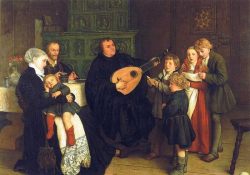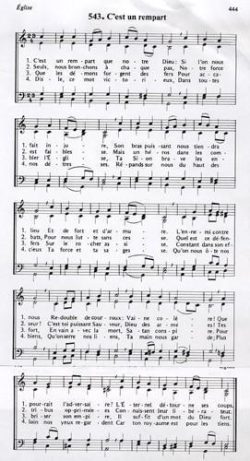Martin Luther and music
Martin Luther (1483-1548) was not only a theologian and a reformer, he was also a musician and a composer.
In the reform of the liturgy, he gave community singing a renewed role. He composed about thirty chorales, and, with other musicians, a hymn book. He asked that singing be taught in schools.
The role Luther wanted music to have contributed to the incredible development of this art in German speaking countries.
Musical training
When Luther studied in Eisenach, he had music lessons along with dance and singing -so did Melanchthon and many of his contemporaries. He learned to distinguish between the different musical genres. Later on, living in a monastery where liturgy played an important role, he could refine his skills. Luther was able to transcribe folk melodies and to harmonise them, as well as to write melodies on psalms in everyday words. He met musicians, such as Ludwig Senfl attached to the Bavarian court and Johan Walter attached to the Saxon court. The latter introduced him in Rome to Josquin des Prez (1440-1521). When Frederick the Wise died, Johan Walter backed Luther, but his successor, John the Magnanimous did not share the same appreciation of music.
Reformation and music
As Luther reformed the liturgy, he accorded full importance to the sermon and to community singing, see On the order of the divine service in the community in 1523. The singing called Choral singing was defined as an assertion of faith, and a spiritual commentary on biblical texts. It could be backed by an organ -chamber organs at the time-, or by an instrumental group.
To implement the change, worshippers had to be acquainted with music practice. Schools or parishes became responsible for vocal training, given by a “cantor”.
A hymn book also had to be designed and published. A team of musicians around Luther was in charge of the project that resulted in the geistliches Gesangbuchlein or small sacred song book. Luther himself composed thirty-six hymns on German texts, some based on psalms, others being spiritual commentaries, often adapted to folk melodies. But Luther did not discard the use of Latin, which he appreciated its facility in adapting it to music. Besides, some of his composer friends used both German and Latin.
Many of Luther’s hymns have survived, among which Eine feste Burg ist unser Gott (A mighty Fortress our God is still), or Christ lag in Todesbanden (Christ lay in death’s bondage).
They are still in use in their simple harmony, but the themes were taken up in great polyphonies, those by Johann-Sebastian Bach being the most impressive.
The hymns were translated and crossed borders. They were often sung in French reformed liturgies, added to psalms by Goudimel (ca 1520-1527) that Calvin had promoted. The French reformer may not have been as sensitive to music as Luther, he mistrusted choral singing as potentially distracting, as the main theme could lead to variations and involved instrumentation.
Luther's heritage: Heinrich Schütz, Dietrich Buxtehude and Johann-Sebastian Bach
The role Luther had granted to music and choral singing greatly helped the development of this art in German speaking countries. Heinrich Schütz (1585-1672), Dietrich Buxtehude (1637-1707), Johann-Sebastian Bach (1735-1782) often used Lutheran themes in their cantatas and oratorios. Each of them developed his own musical language and his instrumentation, but among them Johann-Sebastian Bach gave that language a creative power that had rarely been equalled. All were members of families with violinists, harpsichordists, cantors, teachers, or instrument makers.
The musical skills of Johann-Sebastian Bach’s family could be traced to Luther; in fact the first of them Hans Bach, the son of a baker, was born about 1550 and composed hymns. All his descendants down to Johann-Christian Bach (1735-1782) were devoted to music in some way or another as cantor, composer or organ-builder.
Progress in the tour
Associated tours
-

500 years ago… Luther posted his 95 theses!
According to tradition, in 1517, Martin Luther displayed 95 theses on the doors of the chapel of the castle of Wittenberg. The idea was to start a theological controversy on...
Associated notes
-
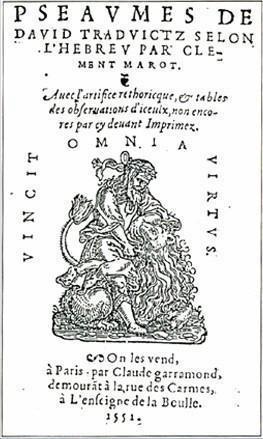
Psalm singing
The reformers wished for congregational singing during services of worship. A new church music repertoire had to be created. In their services French-speaking reformed Churches gave much importance to psalm... -
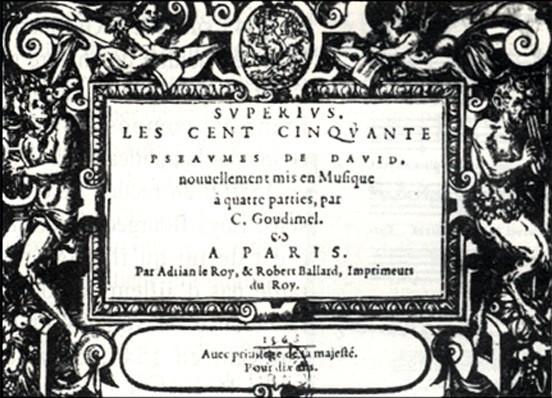
Claude Goudimel (about 1520-1572)
Claude Goudimel was one of the most important French composers of the XVIth century. He composed a polyphonic four-part version of the 150 psalms in the Geneva Psalter for singing... -
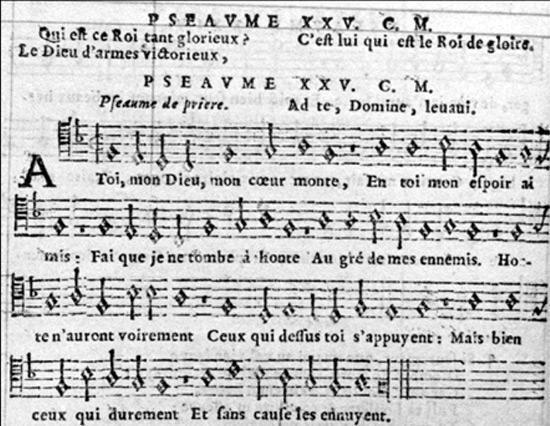
Protestant music
The reformers urged for congregational hymn singing. They strongly supported musical creations to renew the repertoire, namely Chorales for the Lutheran Church and Psalms for the Reformed Church. -

Psautiers
Les Réformateurs prônent le chant comme expression de la foi nouvelle ; les psaumes de la Bible sont traduits en français et mis en musique. Ils sont édités dans des... -

Martin Luther and public life
Luther’s teaching, writings and sermons were widely distributed. After his 95 theses had been posted, and he was condemned by the Pope as a theologian, many of his fellow citizens... -
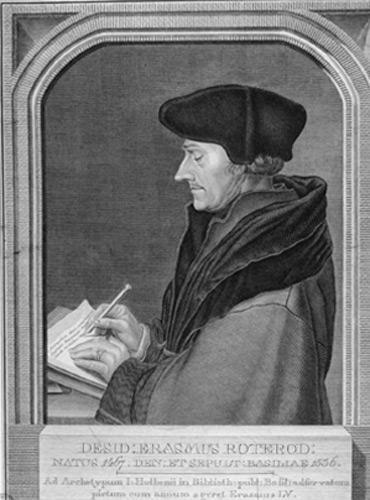
Martin Luther and Erasmus
The relationship between Luther and Erasmus was rich but stormy. The theologian and the humanist had very close understandings in their translations of the Bible. But they had different points... -
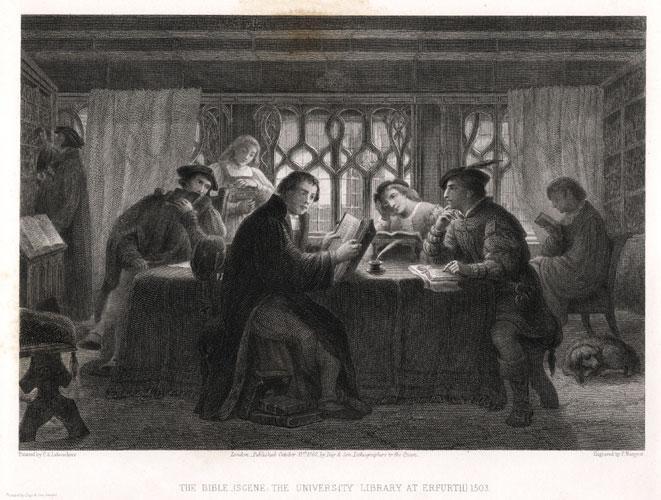
Martin Luther, translator of the Bible
As early as 1517 Martin Luther started translating the Psalms into German. In 1521, when he was imprisoned in Wartburg, he set about translating the New Testament. This great undertaking... -
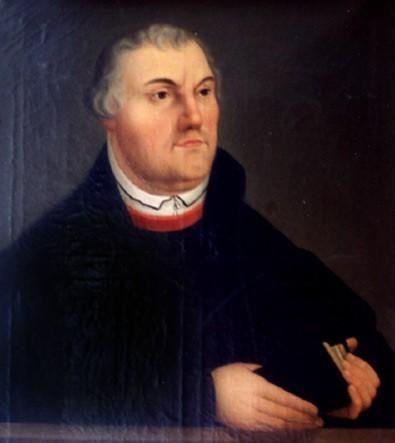
Martin Luther (1483-1546)
Martin Luther’s theology is based on the Bible and not on dogmas. Referring to Paul’s Epistle to the Romans, he claims that salvation is given through God’s grace and not... -
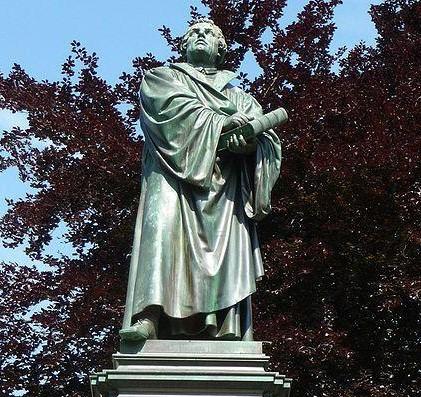
Martin Luther and the Lutheran Reformation
Martin Luther, a german augustin monk, questioned the dogma of salvation through deeds. He was condemned by Pope Leon X, and started the extensive movement of religious reform of the...

